NOTE: This post has also been published on HistPhil, a blog dedicated to the history of the philanthropic and nonprofit sectors. Click here to read the post on that platform.
Nowadays, almost any vocation—from beautician to beekeeping—calls itself a profession and, accordingly, surrounds itself with the appropriate paraphernalia. I prefer to reserve the description “profession” for those vocations that fulfill a number of requirements. Among those requirements are: a core set of values that entail service to the broader society; extensive training with certification by knowledgeable instructors; ability to make and defend complex, disinterested decisions under conditions of uncertainty; and, crucially, the possibility of de-certification if these requirements are violated. For an elaboration of these and other conditions, please click here.
Those who practice philanthropy—either as philanthropists or their designated agents (sometimes termed “philanthropoids,” though I’ll continue to use the word “philanthropists” here)—exhibit many of the outward signs of a profession; but it is premature to admit philanthropy to the ranks of a full-fledged profession. At present, just about anyone who is presentable can claim to be a professional philanthropist; and unless he or she commits actions that are clearly illegal, it’s not possible to remove that title from a claimant.
In my most recent blog, I described four forms of philanthropy. Two of these have existed for many years. Charity entails a gift triggered by the dire straits of the recipient. Support of traditional community organizations (the so-called SOB trio of symphony, orchestra, and ballet) is simply an admirable habit. Needed and appreciated though these two forms of philanthropy may be, they have no particular claims on being a profession.
The other two forms of philanthropy are quite different from one another and also are frequently in tension with one another. I’ll describe them in sharply contrasting ways. In the accounting form of philanthropy, the funders and recipients agree on a goal and then a precise strategic plan is laid out: the means of meeting it; the milestones along the way; and the ways that these achievements can be measured. To be sure, there can be slack or branches in the plan; but unless there is a well-worked-out game plan, an applicant will not even be considered. Think McKinsey; think Boston Consulting Group.
In the taste form of philanthropy, funders and recipients agree broadly on a question to be answered or a problem to be solved. There can be steps along the way, even designated measures. But by and large, the project is seen as a work-in-progress. It’s assumed that the recipients are thoughtful and committed individuals and will keep in regular touch with the funders. However, it’s understood that the project—and even the question to be pursued or the shape of the goal—may well change; and perhaps that change, while not anticipated, may be appropriate and commendable.
In my own case, having been fortunate enough to have secured philanthropic funds for over four decades, I’ve clearly fallen more in the “taste” category. As mentioned in the earlier blog, I’ve been supported by funders who trust me to reflect continuously on what my team and I are doing. I quoted John Gardner, a personal hero, who said, with respect to a large project that my colleagues and I had outlined, “It will take you five years to figure out what question you are asking,” and then Gardner proceeded to help us secure funds. So clearly, I have a personal leaning with regard to that form of philanthropy. I am not completely disinterested.
We’re concerned in this blog with what it takes to be a profession. Frankly, it’s much easier to train individuals in the accountability form of philanthropy—they require business, financial, and strategic acumen; they are expected to honor the ways in which they have been trained; and both they and the beneficiaries of their due diligence know where they stand and what they have to do. The proper training is likely to be attendance at one or more of the respective professional schools and then ascending the ranks in an organization committed to process and accountability.
In contrast, the taste form of philanthropy prefers that the practitioner resemble a curator. The philanthropist reviews various priorities; considers the credentials, track record, and cogency of the grant request and requester; and then makes a considered judgment about what should be funded—and under what conditions, if any, the funding might be terminated. Rather than entailing graduation from a professional school (typically a business or policy school), the educational model resembles participation in an atelier, in which one apprentices oneself to highly regarded philanthropists and observes keenly how they go about their job. As Mihaly Csikszentmihaly expresses it, “Philanthropy resembles artistic domains—people are joined by a common goal but left free to change and improvise the means of reaching this goal.”
One can actually observe lineages: at the Carnegie Corporation, John Gardner was the mentor for Barbara Finberg; Barbara Finberg mentored Gerry Mannion; and the lineage continues. I’ve also observed such mentoring first hand with respect to Julie Kidd, the longtime president of The Endeavor Foundation (formerly The Christian A. Johnson Endeavor Foundation). Not only has Julie modelled open-minded philanthropy for a number of excellent project managers over the years; recently, she has brought her daughter Ashley centrally into the work of the Foundation.
I’ve sharply contrasted two forms of philanthropy, but there is no reason for them to be mutually exclusive. An aspiring philanthropist can be trained in both ways; indeed, a person with both management consultant and apprentice training could become a very skillful dispenser of support (so long as she kept the aforementioned distinction in mind and did not attempt to merge these two philanthropic strands). Perhaps, indeed, this would be one way to move philanthropy closer to a professional status.
Moreover, there are efforts to codify what it means to be a professional philanthropist. As I was rolling up my sleeves to write this blog, I was sent the “Code of Ethical Standards” for the Association of Fundraising Professionals. Most of the 25 principles seem reasonable, if predictable. But I was caught by one of the bullets—“Members shall recognize their individual boundaries of professional competence.” As phrased, this point seems to presuppose what is meant by professional competence. My argument here is that we still need to define that competence—or those competences!—and do so in such a way that some kind of body could declare, with confidence, “You have violated the boundaries of professional competence and are no longer considered a philanthropist.”
More so than in other aspiring professions, in the end, individuals with resources are always making value judgments about what to support and how much support to give. As far as I can see, there is no way to remove this central core element of philanthropy. And so while it certainly should be possible to make philanthropy more professional, I don’t expect to see the time when we will clearly consider philanthropy as one of the “major” professions.










